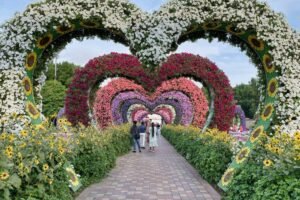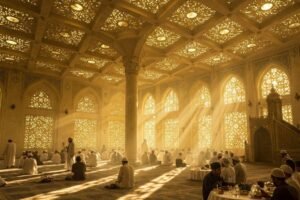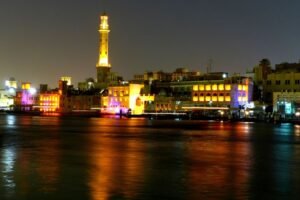Vietnam is a country steeped in rich history, culture, and stunning architecture. From the bustling streets of Ho Chi Minh City (HCMC) to the serene charm of Hanoi, both cities offer a blend of ancient landmarks and modern attractions that are sure to captivate any visitor. Whether you’re a history buff, a culture enthusiast, or simply love to explore new places, these 10 must-see landmarks in Ho Chi Minh City and Hanoi will give you an unforgettable experience of Vietnam’s heritage.
Ho Chi Minh City Landmarks
1. Notre-Dame Cathedral Basilica of Saigon Located in the heart of Ho Chi Minh City, the Notre-Dame Cathedral Basilica of Saigon is one of the most iconic landmarks in Vietnam. Built by the French in the late 19th century, this beautiful cathedral features stunning neo-Romanesque architecture and vibrant red brick walls. It is a peaceful place to reflect and admire the intricate stained glass windows and towering spires.
What to Do: Take a leisurely walk around the cathedral and snap some photos of this impressive architectural masterpiece. You can also explore the nearby Saigon Central Post Office, which shares the same colonial architectural style.
2. War Remnants Museum The War Remnants Museum is a must-visit for anyone wanting to understand the impact of the Vietnam War. Located near the heart of the city, this museum houses a vast collection of exhibits, including photographs, military equipment, and personal accounts, all documenting the harrowing effects of the war on the country and its people.
What to Do: Allow several hours to explore the exhibits and gain a deeper understanding of Vietnam’s history. The museum also offers a poignant glimpse into the suffering of civilians during the conflict. 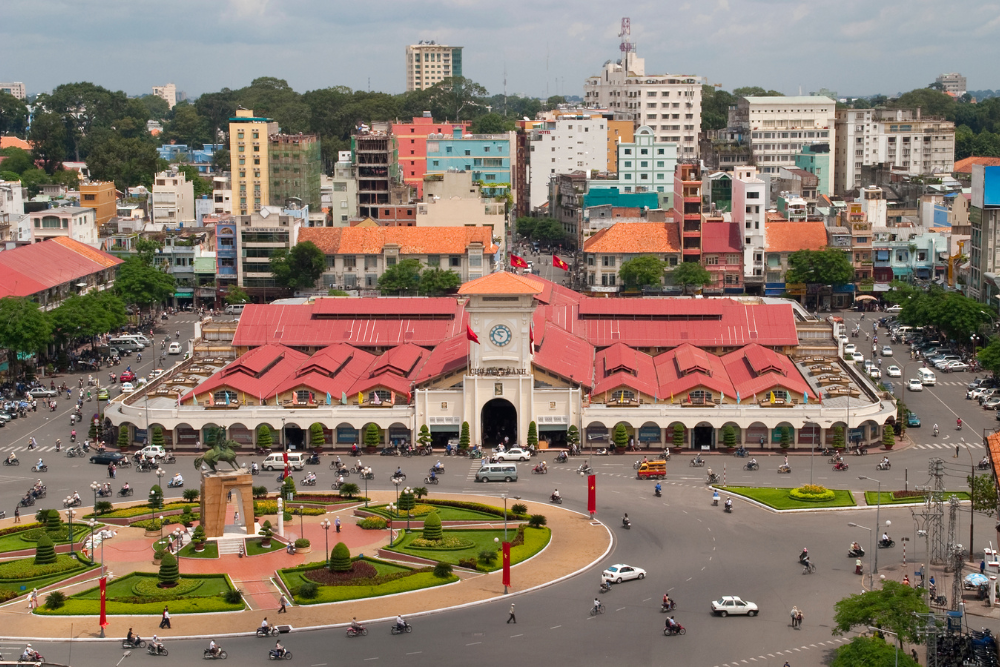
3. Ben Thanh Market One of the most iconic markets in Ho Chi Minh City, Ben Thanh Market is the perfect place to experience the bustling energy of the city. Offering a wide variety of goods, from fresh produce to handicrafts, clothes, and souvenirs, it’s a vibrant market to explore.
What to Do: Browse through the market’s colorful stalls, sample local snacks like Vietnamese spring rolls and bánh mì, and haggle with the vendors for the best prices.
4. Reunification Palace Reunification Palace, also known as the Independence Palace, is a historic landmark that symbolizes the reunification of Vietnam after the Vietnam War. The palace is filled with beautiful rooms, war relics, and a fascinating history of the country’s political past.
What to Do: Explore the palace’s various rooms, including the presidential office, war rooms, and underground bunkers. Don’t miss the helicopter pad on the rooftop, which served as a key point during the fall of Saigon in 1975.
5. Jade Emperor Pagoda This beautiful pagoda is one of the most famous and well-preserved temples in Ho Chi Minh City. With its stunning architecture, intricate carvings, and vibrant colors, it’s a peaceful and spiritual haven amid the city’s hustle and bustle.
What to Do: Take a moment to admire the elaborate decorations, including statues of deities and intricate wood carvings. It’s a great spot for some quiet reflection and to learn about Vietnamese Buddhism.
Hanoi Landmarks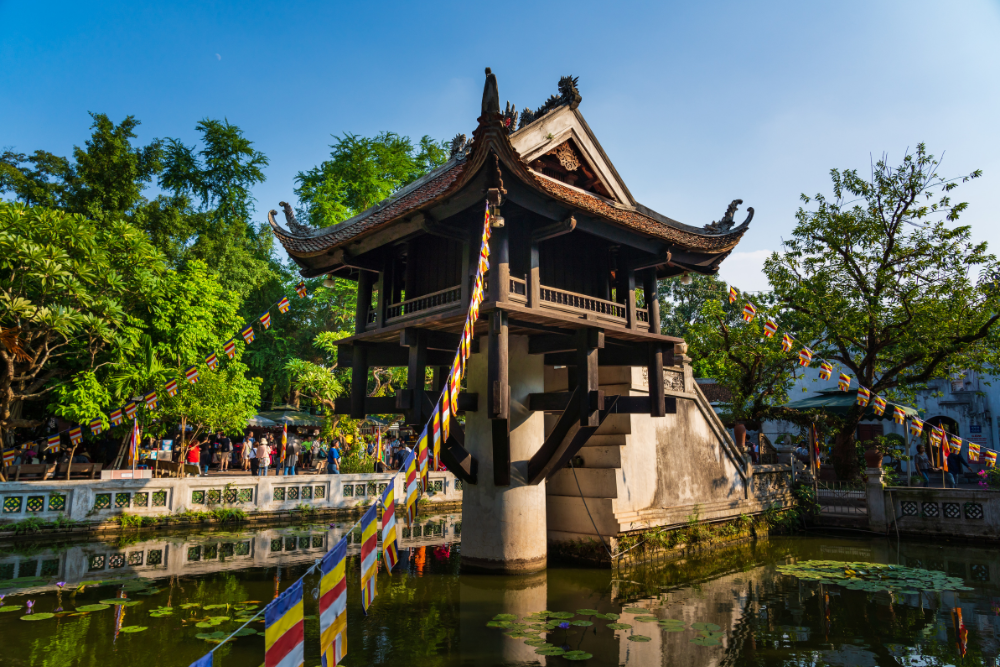
6. Hoan Kiem Lake and Ngoc Son Temple Hoan Kiem Lake, located in the heart of Hanoi, is a tranquil spot where you can escape the noise of the city. The Ngoc Son Temple, which sits on a small island in the middle of the lake, is accessible via a charming red bridge. This area is rich in both natural beauty and historical significance.
What to Do: Walk around the lake, visit the Ngoc Son Temple, and enjoy the peaceful atmosphere. The lake is especially stunning at sunrise and sunset, making it a perfect spot for a relaxing stroll.
7. The Ho Chi Minh Mausoleum The Ho Chi Minh Mausoleum is one of Hanoi’s most visited landmarks, dedicated to the father of modern Vietnam, President Ho Chi Minh. Located in Ba Dinh Square, this imposing structure houses the embalmed body of Ho Chi Minh and is a symbol of his lasting influence on the country.
What to Do: Pay your respects at the mausoleum, and take a moment to reflect on Ho Chi Minh’s leadership. While visiting, you can also explore the surrounding gardens and the nearby Presidential Palace.
8. The Temple of Literature As Vietnam’s first university, the Temple of Literature is a well-preserved historical site dedicated to Confucius and scholars. With its stunning architecture, tranquil courtyards, and peaceful gardens, the Temple of Literature is one of Hanoi’s most serene and culturally significant landmarks.
What to Do: Explore the five courtyards, including the main courtyard, which houses the statue of Confucius, and the stele of doctors. The temple is a great place to learn about Vietnam’s educational history while enjoying the calm surroundings. 
9. Hanoi Old Quarter The Old Quarter is the heart of Hanoi, known for its narrow alleys, French colonial architecture, and vibrant street life. Each street is dedicated to a specific trade, such as silk, copperware, or herbs. The Old Quarter is a fascinating blend of history, culture, and local traditions.
What to Do: Wander through the labyrinthine streets, stopping to admire the colonial buildings, visit local shops, and sample the street food, including pho and bun cha. The Old Quarter is a perfect place to get lost and experience the true spirit of Hanoi.
10. One Pillar Pagoda The One Pillar Pagoda is one of Hanoi’s most iconic and unique landmarks. Built in 1049, this wooden pagoda sits on a single stone pillar in the middle of a lotus pond and is a symbol of purity and harmony. It is an important Buddhist site and a place of pilgrimage for many locals.
What to Do: Admire the pagoda’s stunning architecture and serene setting. It’s a great spot to take photos and experience the peaceful atmosphere. The One Pillar Pagoda is also part of the larger Ba Dinh Historical Complex, so it’s worth visiting in combination with the Ho Chi Minh Mausoleum.
Conclusion: Explore the Heart of Vietnam
Ho Chi Minh City and Hanoi are two of Vietnam’s most dynamic cities, offering a fascinating mix of modern life, historical landmarks, and cultural experiences. From the colonial-era architecture of HCMC to the centuries-old temples and serene lakes of Hanoi, these 10 must-see landmarks provide an enriching way to explore the country’s rich heritage. Whether you’re wandering through the Old Quarter, learning about Vietnam’s history at the War Remnants Museum, or experiencing the tranquil beauty of Hoan Kiem Lake, these landmarks will leave you with lasting memories of Vietnam’s unique culture and history.





